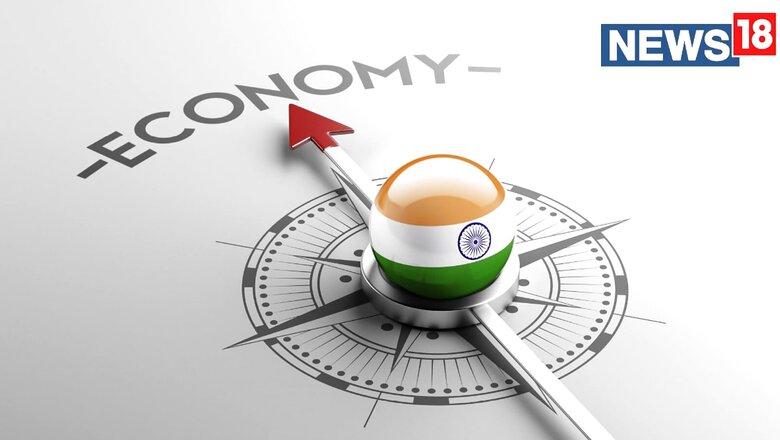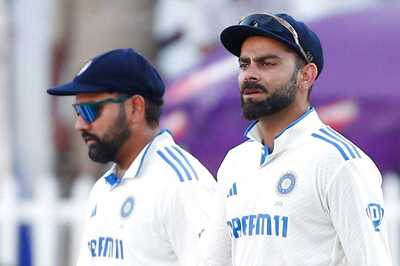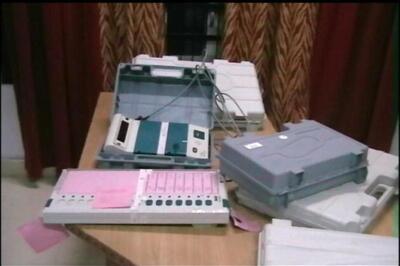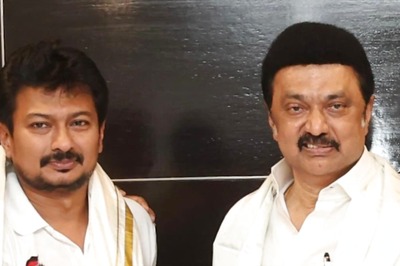Economic Survey Raises Hopes for Budget Speech, FM Sitharaman Must Show Path for $5-Trillion Economy

views
Ever since 1964, when the Economic Survey got separated from the Union Budget and was presented a day before the Budget day, this annual stock taking of the country’s economy has assumed salience next only to that of the Budget. Though non-binding in nature, the Economic Survey tabled in both houses of Parliament by none other than the finance minister presents a detailed health-check of the economy along with prognosis for the future in the eyes of the government of the day.
The Economic Survey FY2022 is refreshingly different in at least three ways.
First, the sheer size of the document. Starting modestly with few concise pages in 1951, the Economic Survey document grew steadily in size. By FY1992, it turned into a two-volume document; at the turn of the century it became a 400-page document; became a 600-page saga at the turn of the first decade; and by the end of the second decade, it ballooned to an unwieldy 900-page, three-volume document.
The FY2022 Economic Survey with its single volume, concise approach of telling the same story in half the size of last year’s document gets full marks for good storytelling.
Second, the approach of the Survey. The new approach marks a break from the default policy making approach – the “waterfall” approach – followed so far in the country, which offered upfront analysis of issues, detailed planning and meticulous implementation. But the real world is a complex and unpredictable place buffeted by all kinds of random shocks and unintended consequences. Therefore, the current Economic Survey recommends an alternative “Agile” approach, like the one which informed the country’s economic response to the shock.
As the Economic Survey points out, the Agile framework is typically based on feedback loops, real-time monitoring of the actual outcomes, flexible responses, safety net-buffers and other critical real-time determinants.
The new approach aims to create virtuous feedback loop and interlinkages among seemingly disparate-looking policies, ranging from health, particularly of the poor; massive infrastructure spending across sectors; education, particularly of rural and urban poor; structural reforms; deregulation; process simplification; privatisation; foreign exchange reserves accumulation; inflation-targeting; housing for all; green technology; the Insolvency and Bankruptcy Code; financial inclusion; direct benefit transfers and so on.
If the government can truly initiate a virtuous feedback loop to handle the uncertain future more smartly and is able to take remedial steps on time, the new approach will be a good beginning.
Third, the desired outcome. The document acknowledges the headwinds, disruptions and uncertainty (both long-term and short-term) of Covid-19 and is conservative in its GDP projection for next year at 8-8.5 per cent despite the World Bank predicting that Indian economy is growing fastest in the world this year and the next. This conservatism is a prudent approach as in recent years the Survey did not get its GDP numbers right.
Last time when the Economic Survey hit the right button on the growth numbers was 2017-18, when the actual GDP growth turned out to be 7.2 per cent against projected 7 per cent. Last four year GDP numbers of 9.2 per cent (FY22), negative 7.3 per cent (FY21), 4 per cent (FY20) and 6.5 per cent (FY19) against the Economic Survey projected growth of 11 per cent, negative 6-6.5 per cent, 7 per cent and 7-7.5 per cent did not match.
There are many dimensions of the Survey but following are the critical ones:
First, Gross Fixed Capital Formation (GFCF) is likely to have resulted in a healthy 15 per cent growth in FY2022, showing robust investment and return to the pre-pandemic era. Also, investment to GDP ratio is a healthy 29.6 per cent, the highest in seven years. This is noteworthy because even now the private investment recovery has not yet taken off along the desired trajectory.
Second, FY2022 has witnessed the transformative return of both merchandise export and services’ growth. First eight months’ merchandise export has seen an increase of more than $30 billion, and if one adds the recent figures, it is likely to touch $400 billion for the first time. Net services exports have also risen sharply, driven by professional and management consulting services, audio-visual and related services, freight transport services, telecommunications, computer and information services to name a few.
Third, despite the headwinds and trials and tribulations of the short-term and long-term disruptions and the uncertainty of Covid, the country’s balance of payments has been in surplus. This, among other things, has helped the country record forex reserves at an all-time high of $634 billion as of December 31, 2021. This reserve is not only sufficient to pay for approximately 13 months of imports but is also more than the current external debt of the country.
Fourth, going forward, the Survey makes it clear that India has to reach the target of $5-trillion economy by FY2025 and there is complete clarity on the pathway. To reach the goal, there is a need for massive increase in infrastructure investment, with $1.5 trillion (2020-2025) investment in NIP (National Infrastructure Pipeline) as part of the Centre-state-private sector partnership.
Fifth, in the overall schema of infrastructure development, the government’s prime focus has been road and highways. It is no surprise that in 2020-21, per day road construction increased to 36.5 km from 28 km in the previous year. However, the more important infrastructure thrust of the Survey is on rejuvenation of the Indian Railways. The Survey correctly points out that the capital expenditure for the Indian Railways increased to Rs 155,181 crore in 2020-21 from an average annual of Rs 45,980 crore during 2009-14. The Survey, more importantly, provides a clear path for greater focus on investment in Indian Railways, to more than Rs 215,000 crore in FY 2021-22.
What remains to be seen is if in the Budget presented on February 1, the expenditure in Railways takes a quantum leap or crawls incrementally.
Between 2008 and 2017, India spent $1.1 trillion in a decade. However, the dream of $5-trillion economy by 2025 is built around a massive $1.4-1.5 trillion investment in infrastructure during 2020-2022. The actualisation of this audacious dream is built around minimum 20 per cent contribution to the NIP in PPP mode from the private sector. The challenge, therefore, for the government is to unleash a reinvigorated PPP structure to ensure that it gets the matching private sector investment, to ensure the $1.5-trillion dream does not remain a pipe dream.
The author is an infrastructure expert and President, Advisory Services, BARSYL Limited. The views expressed in this article are those of the author and do not represent the stand of this publication or the author’s company.
Read all the Latest Opinions here




















Comments
0 comment